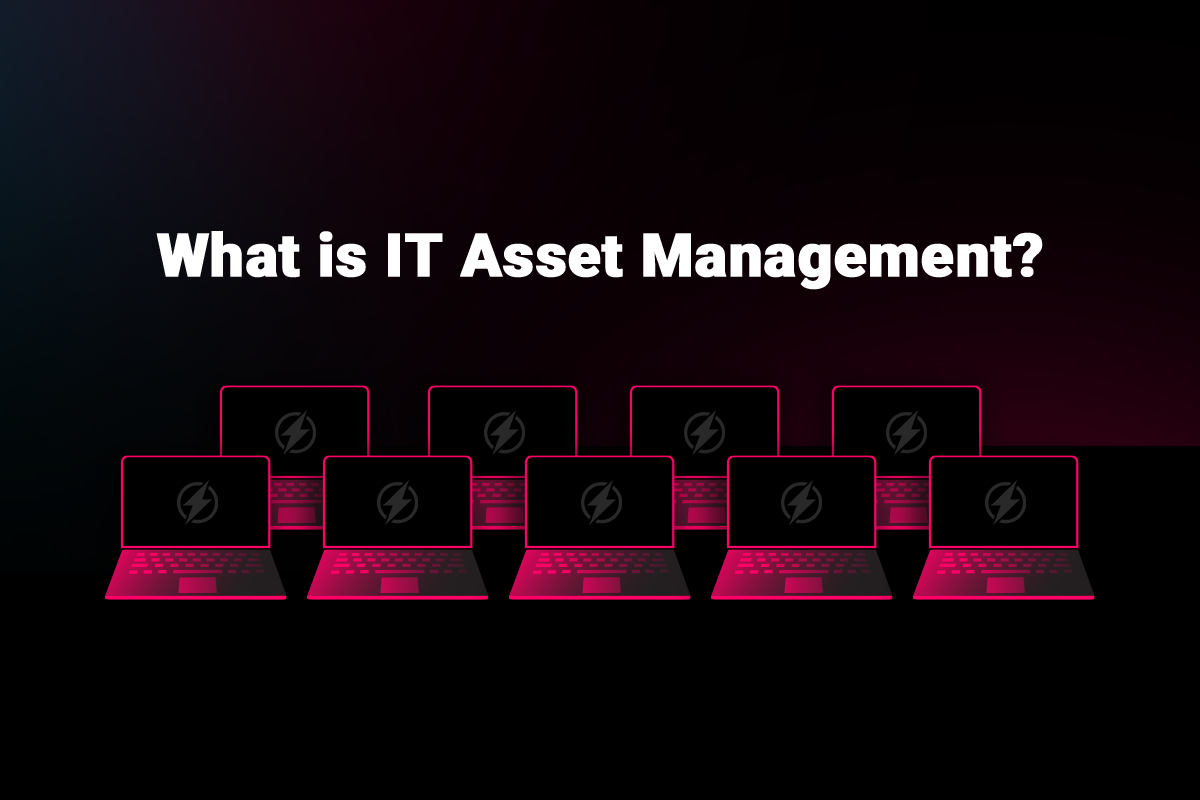
As your business grows, so does your reliance on a wide range of technology. To support expanding teams and operations, many organizations make quick decisions to purchase new hardware or subscribe to new applications. In this phase of growth, it can be difficult to keep up with which IT assets are used by which departments. Unfortunately, this can lead to wasted resources, licensing issues, and other associated challenges. To help you proactively manage your business’s full inventory of technology, this guide shares everything you need to know about IT asset management.
The Definition of IT Asset Management
IT asset management is a structured process that keeps track of every component of an organization’s IT infrastructure. Following this process equips your business to extract maximum value from your IT, maintain compliance with license agreements, reduce unnecessary expenditure, and improve employee productivity.
The spectrum of IT asset management involves monitoring a company’s hardware, software, and any other technology assets, while ensuring they play a critical role in the success of your business. IT assets such as servers, computers, and software licenses have a finite period of use. Organizations must remain proactive to optimize the value they generate from these resources during their lifespan.
What is an IT Asset Manager?
An IT asset manager is a dedicated expert who is responsible for a business’s IT asset management strategy. An IT Asset Manager plays a central role in designing, developing, and implementing various tactics to help a business optimize its IT assets, including:
- Communicating IT asset purchasing strategies
- Assessing IT risk in the business
- Developing and facilitating IT solutions to possible risks
- Assigning IT assets and responsibilities to other employees
- Introducing new IT assets in the organization
- Maintaining IT licensing and compliance requirements

Why JOOR trusts Electric to handle the day-to-day of IT
As their company scaled, JOOR struggled with a lack of visibility into their IT infrastructure, including request volume & types, applications utilized by the business, & the number of devices + details of those devices.
Find Out How Electric HelpedWhat is the Importance of IT Asset Management?
Implementing IT asset management can be a labor-intensive undertaking, especially for smaller businesses with limited resources. Carried out effectively, it requires time and expertise, which can be seen as a financial burden. However, IT asset management can actually save your business money in the long run by eliminating under-used resources and proactively maintaining the health of assets such as employee devices. Here are some reasons why IT asset management is important:
1. Keeps Accurate Records of IT Assets
As the use of IT grows within a business, the management and control of hardware, software, and licenses becomes more complex and challenging. Organizations need an accurate view of what assets they own and where they are located to make sound decisions about capacity, redeployment, replacement, and retirement.
2. Prevents Unnecessary IT Purchases
Usually, companies will purchase more software licenses than they need. This can be prevented by keeping track of what software is installed on which devices and who is using it. You can then make decisions about whether you need to purchase new licenses or reassign existing ones. This approach reduces unnecessary expenses and makes the most of the assets you have.
3. Ensures Compliance with License Agreements
Organizations can be fined for not adhering to the terms of their software licenses. IT asset management can help you keep track of your permits and ensure that you’re using them within the terms of your agreement. This avoids the risk of non-compliance and the associated cost penalties. Keeping track of renewal dates also prevents employees from being locked out of critical resources in the event their license expires unexpectedly.
4. Improves Employee Productivity
When employees have reliable and consistent access to the resources they need to fulfill their roles, organizational productivity soars. By contrast, employees that are forced to work on slow, outdated devices are likely to become frustrated, while those that struggle to gain access to the apps and systems they need can experience significant downtime.

How much is IT truly costing your business?
Use Electric’s free IT cost calculator to find out today.
Calculate Your IT SpendHow to Manage IT Assets
For an IT asset management strategy to be successful, there are certain requirements and best practices that should be observed. Here are 5 ways to manage IT assets:
1. Define Critical Assets
You can’t manage what you can’t measure. This old saying is as true for IT asset management as it is in any other area of business. To manage your IT assets effectively, you first need to know what they are and how important they are to your business. Keep a regularly updated inventory, highlighting critical assets that would have the most significant impact on your business operations if they were to fail. You must keep a close eye on these assets and ensure they are always in good working order.
2. Identify Cloud Resources
It’s no secret that cloud computing has revolutionized the way businesses operate. More and more companies are moving their operations to the cloud to take advantage of its flexibility and scalability. It is essential to ensure that your IT asset management strategy considers your company’s cloud licensing. By identifying which assets are stored in the cloud, you can also ensure that they are appropriately managed and monitored.
3. Develop an Inventory Management System
Once you know your critical assets, you must develop a system to record and monitor them. This is where an inventory management system comes in. An inventory management system allows you to keep track of where all of your assets are located, and who is responsible for them. Having a singular view of your IT asset inventory will make it much easier to monitor the health of your assets and ensure they are appropriately managed.
4. Implement Asset Tracking
With an inventory management system in place, you are now ready to implement IT asset tracking. An important element of your Mobile Device Management strategy, asset tracking means having a system that can track your assets’ location, who uses them, and for what purpose. There are several different ways to do this, but one of the most effective approaches is to use asset tags. Asset tags are physical tags that are affixed to each device, containing a unique identifier that can be used to track the asset.
5. Monitor Asset Utilization
Another essential component of IT asset management is monitoring asset utilization. This involves tracking how often assets are used and by whom. By understanding how your assets are being used, you can ensure they are being leveraged effectively and not sitting idle. Additionally, this information can inform when to replace or upgrade assets.
How Can Electric Assist in IT Asset Management?
IT asset management is not a simple undertaking, especially where small businesses are concerned. SMBs often don’t have sufficient technical capacity in their in-house IT department to effectively carry out IT asset management, which is why many companies choose to outsource this critical function. At Electric, with our IT management platform, we can help your organization manage mobile devices, applications, cloud licenses, and much more. Contact us today to learn how we can assist with IT asset management for your business.



